Nashik Grape Farmer Saves 2 Crore Litres of Water Despite Droughts. Here’s How!
Despite farming in a drought-affected region like Nashikh district in Maharashtra, Bapu Bhausaheb Salunke manages to grow 200 tonnes of grapes every year!
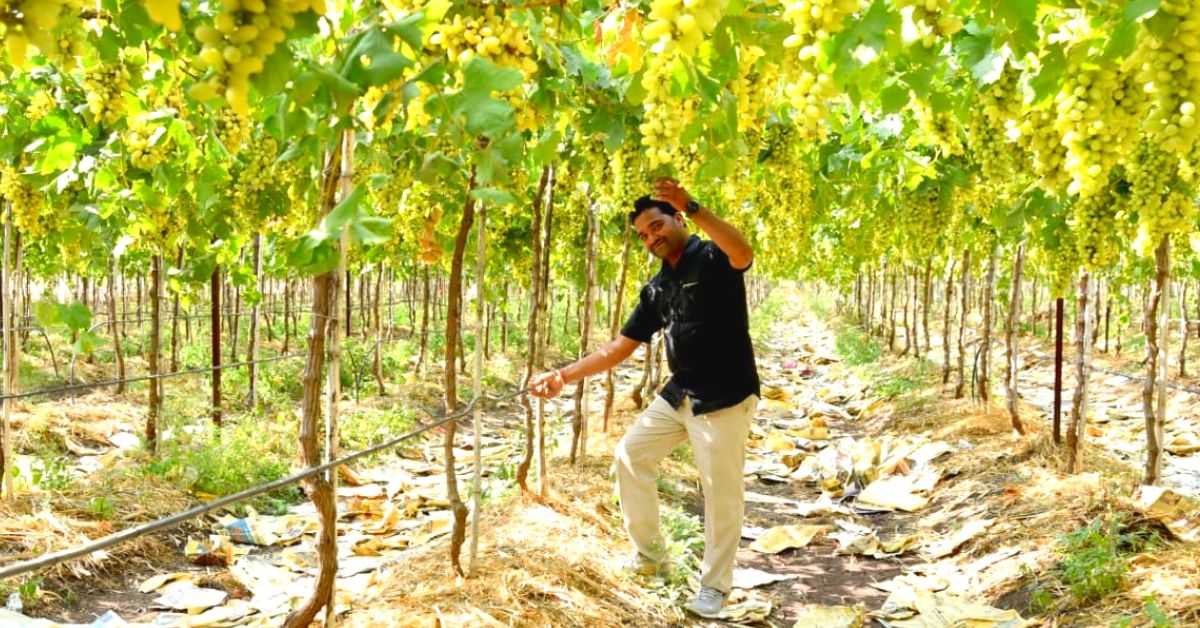
Last year, 10,000 farmers from Maharashtra’s Nashik district staged a protest demanding government intervention to mitigate their woes. The scanty and unseasonal rainfall coupled with depleting natural water reservoirs had resulted in a drought-like situation across the district and severely affected agricultural production.
Wondering how to grow your own vegetables at home? Look no further! Check out different kits by Upaj Farms here.
Sadly, the villages in the district have been facing acute water scarcity for a while now. The only notable exception is the Vadner Bhairav village.
Almost 80 per cent of its residents are engaged in agricultural activities, and the village is famous for its juicy and sweet grapes. The farmers there have remained largely unaffected and faced minimal loses—all thanks to Bapu Bhausaheb Salunke, a grape farmer.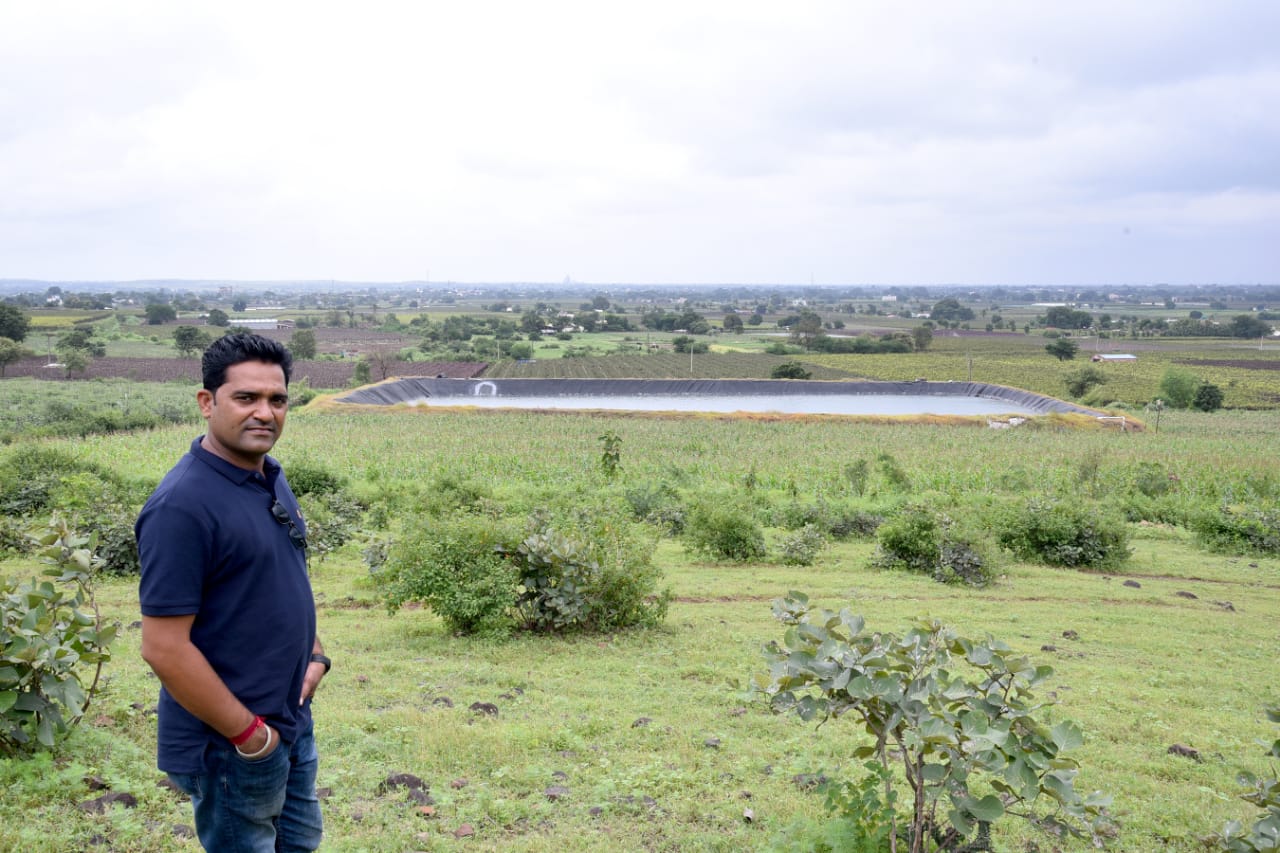
It has been close to 15 years since the 37-year-old first implemented water conservation methods in his 22-acre land and on an average, he saves up to two crore litres of rainwater every year. Besides mitigating water scarcity problems, it has enhanced the farm output, decreased plant damage and increased the vigneron’s annual income.
Preventing rainwater water runoff, recharging groundwater and filling watershed pond is the three-step protocol that ensures availability of water in abundance in Salunkhe’s farm.
Seeing Salunkhe’s success, his fellow villagers were inspired to follow suit, and the results are there for everyone to see.
Making Farming A Learning Process
When Salunke was forced to drop out of higher secondary school, he did not mind. For the young boy, this was an opportunity to follow his passion, farming.
“Farming is our family occupation, and I have grown up amidst crops, seeds and soil. My father was unable to handle the farm on his own, so I joined him in 2004 to help him out. For the first time, I directly understood the problems of a farmer in a drought-affected region,” Salunkhe tells The Better India.
Back then, Salunkhe’s family grew several pulses and vegetables, and grapes were only a small part of the production.
Hailstones, which are very common in the village, would often destroy the crops leaving very little food to sell in the market. Scanty rainfalls would further worsen the situation.
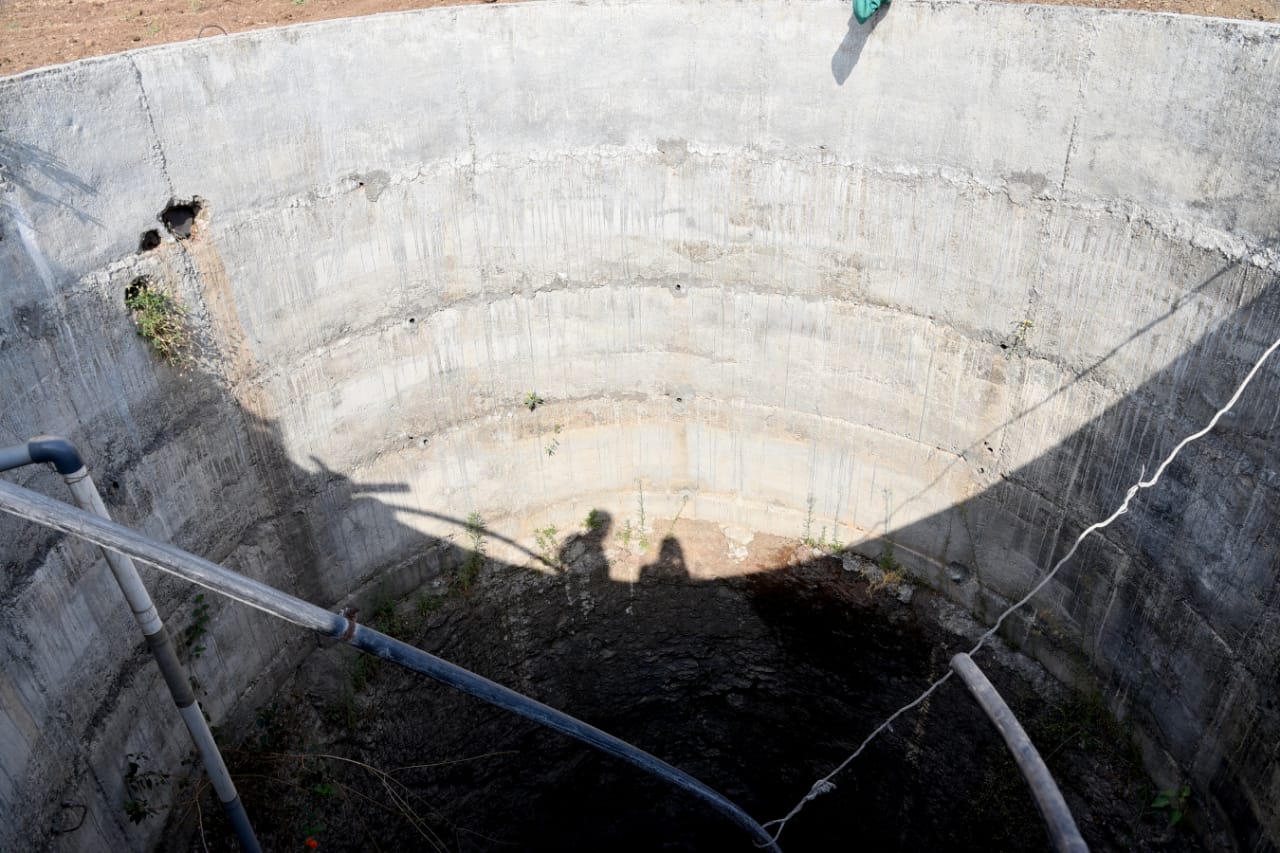
“We did not know about land development and watershed development. We didn’t even know which seeds would suit the soil,” shares Salukhe.
Upon the recommendation of a relative, he underwent a 5-day training programme at Maharashtra’s Water and Land Management Institute in Aurangabad in 2004.
‘Under land and water management, we were taught concepts like rainwater harvesting, micro-irrigation, identifying high-yield seeds and so on,” he says. Salunkhe was so impressed, he that went for similar training programmes in the institute, to improve his learning.
Salunkhe credits his success and knowledge to professor BM Shete, who has trained one lakh farmers in the last 35 years.
“There are lakhs of farmers who have abundant land, and yet they face troubles in producing enough food. Here at the institute, we train them to optimise the available resources. Salunkhe’s farm makes a good example. With micro-irrigation he has managed to grow grapes without losing its nutrient value,” says Prof Shete, who retired a month ago, to TBI.
Farming More With Less Water
Post-training, he was now more confident and informed. He took the big risk of investing around 6 lakh to set up a watershed pond on one acre of land in 2007. He also dug a well inside the farm for the same purpose
“The depth of the pond is 275×155 feet, and it can store up to two crore litres of water. Two months of regular rains almost filled both the pond and well, and this time I was able to irrigate majority part of the farm with the rainwater,” says Salunkhe.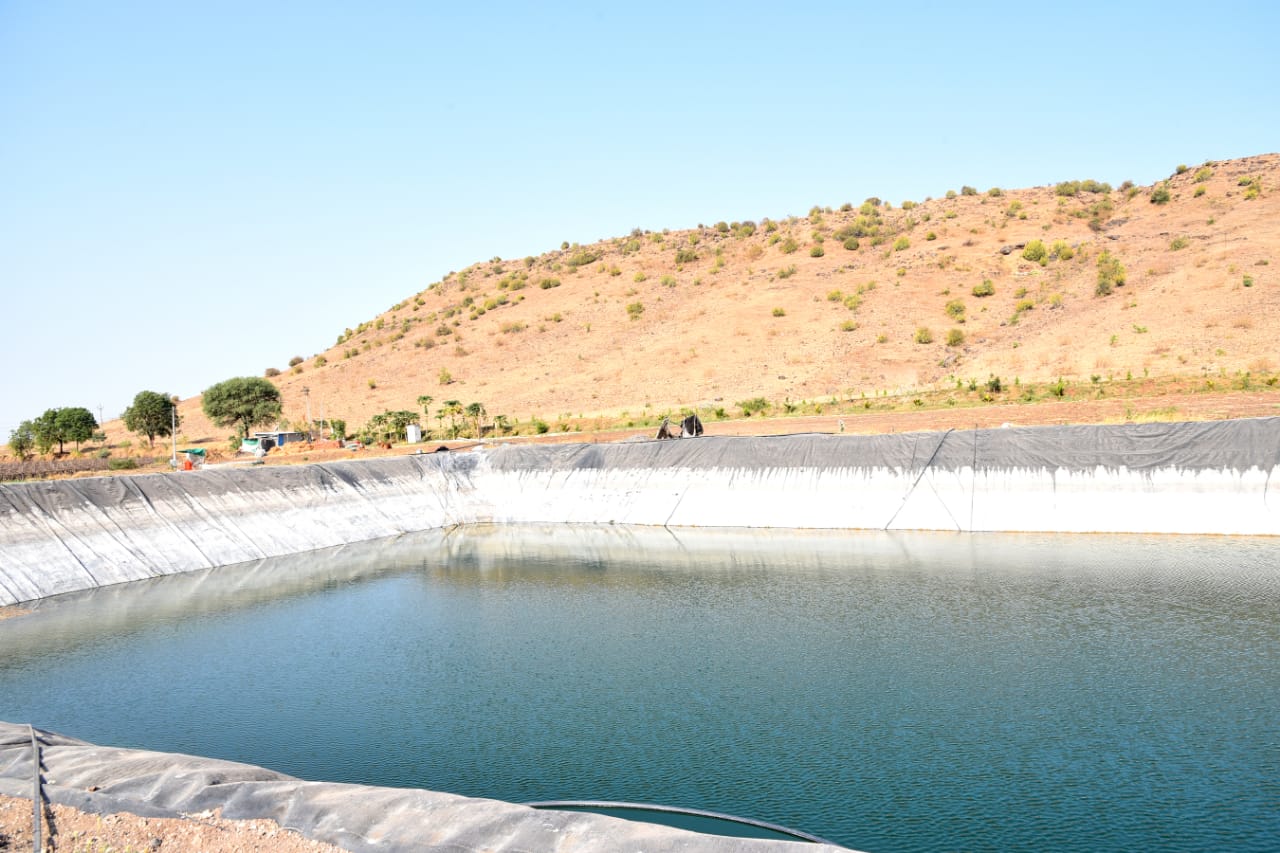
The following year, he set up another watershed pond with a capacity of 50 lakh litres, on half an acre of land. He also created elevated bunds (embankments) in his field to prevent water runoff post irrigation, check soil erosion, recharge groundwater and capture rainwater.
“The bunds are beneficial for other farmers as it recharges groundwater in surrounding areas as well,” he says.
He also adopted a micro-irrigation or low-volume irrigation system to water the farm. “Water is applied drop by drop very close to the root zone area of the plant. This minimises evaporation and retains the nutrients in grapes.
Seeing the benefits, Salunkhe gradually stopped cultivating vegetables, and today his entire farm has turned into a vineyard.
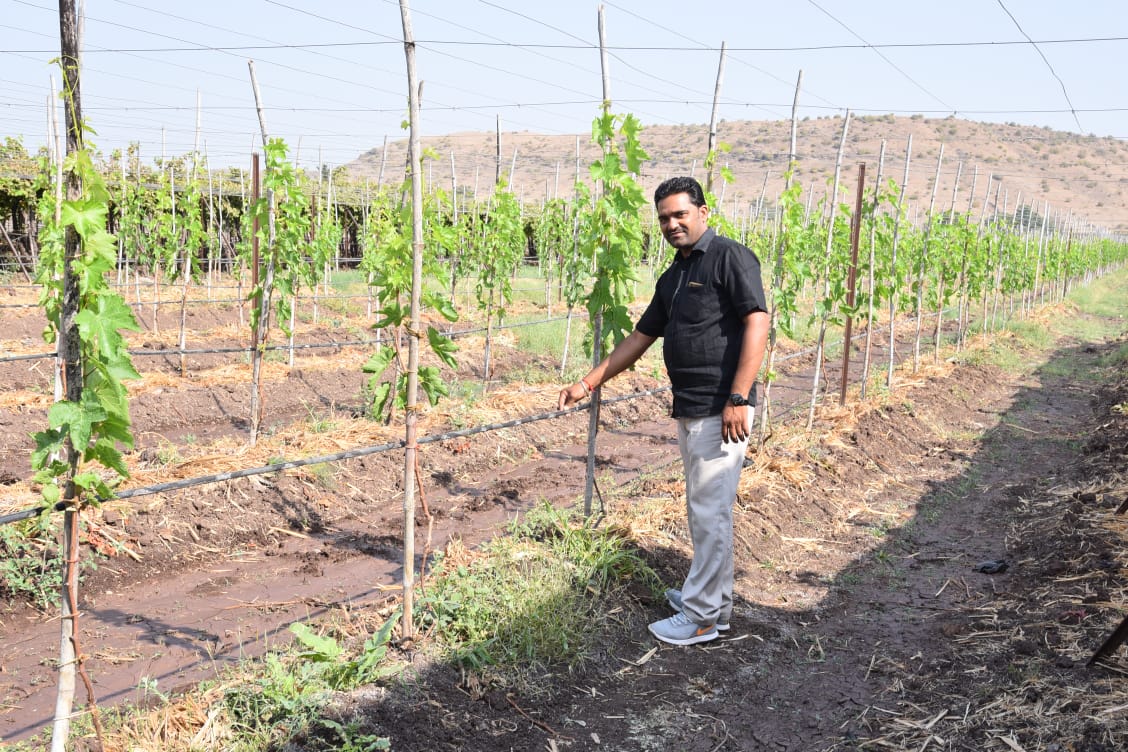
“I have also adopted several organic methods to grow grapes. For instance, instead of using polythene sheets for mulching, I cover the surface of the soil with leftover sugarcane stick leaves which retain moisture and also improve soil quality, besides being a sustainable option for manure,” he states.
He also tries to minimise the use of chemicals by using cow dung.
Before incorporating the water-saving techniques, the water would be sufficient to only cover 3-5 acres of land, and now there is enough water to cover 22 acres.
Salunkhe’s farm boasts of 22,000 grape trees with eight different varieties of grapes. As for the output, Salunkhe’s farm gives up to 200 tonnes of grapes annually that he exports domestically and to European countries, Russia, China, Bangladesh and Sri Lanka.
“Even now, getting a fair price for grapes is challenging due to the presence of middlemen. So, I try to send most of the produce outside India,” says Salunkhe.
Salunkhe’s financial status has also improved as profits are double than investment costs. He earns Rs 4 lakh per acre of land!
“When I started farming, I had a cycle for commuting purposes, and today I have two cars and seven motorcycles. I never imagined saving water would change my life. It truly is a precious resource,” he signs off.
All images have been sourced from Bapu Salunkhe.
You can reach Bapu Salunkhe at: +91 99707 20031
Also Read: 25 Kg Cauliflowers, 3-Ft Brinjals & Padma Shri: This 72-YO Farmer is Truly Amazing
(Edited by Gayatri Mishra)
Like this story? Or have something to share?
Write to us: [email protected]
Connect with us on Facebook and Twitter.
This story made me
- 97
- 121
- 89
- 167
Tell Us More
We bring stories straight from the heart of India, to inspire millions and create a wave of impact. Our positive movement is growing bigger everyday, and we would love for you to join it.
Please contribute whatever you can, every little penny helps our team in bringing you more stories that support dreams and spread hope.



















